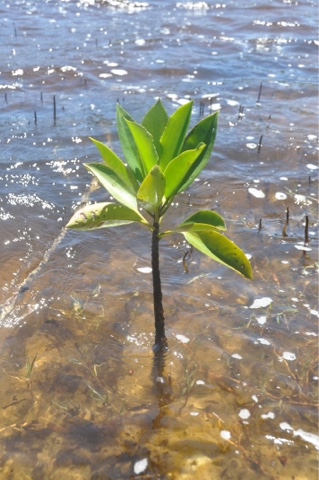
One of the easier and more enjoyable tasks here involves reforesting the mangroves. Mangroves are denizens of sub-humid evergreen forests. They do not lose their leaves.
An unusual characteristic of the mangrove, shared with the eucalyptus, allows their root systems to absorb brackish waters. Brackish is not Japanese for ebony-like. Although there are ebony trees here, too. Brackish refers to water that contains a level of salt, often a result of back flow from the ocean that the river flows into. The river here has a level of salinity somewhere between Ogunquit and the salt water that your mother prepared for eggs to be dipped into at Seder.
There is a sign at the landing pier stating that guests should be aware that an occasional crocodile visits shore and, as a result, swimming is somewhat discouraged.
This is the water that we waded into to forage mangrove pods. So Lori and I have now spent time in crocodile infested waters. Perhaps ‘infested’ is a bit of an overstatement; but let’s say that every log I looked at near to the water’s edge seemed to have two nostrils and sharp teeth.
Despite an ever-present and lurking danger, the six of us celebrated the harvest by heading out into deeper water, horsing around on the waist deep sandbar, always making sure that I was, at worst, the second slowest swimmer.
Mangrove pods hang down from mature mangroves that line the river banks. I assume that they are called mangrove groves. Or at least, they should be. The pods resemble catalpas.
Eventually they fall into the river where they are carried along toward shore. They bob up and down near the surface, looking like skinny, vertical pickles, varying in length from 4 to 12 inches.
To access the liquid plantation we got into pirogues and paddled through the channels (much more fun to channel surf than channel paddle) until we reached our destination.
About a 15 minute paddle upstream, 10 coming back down. Several years back I had the opportunity to renew my Taylor-Statten induced canoeing skills as I paddled through the Amazon. Now I was getting the chance to again display my prowess at the prow. Pirogues serve many functions. In Madagascar and other countries they are a dugout canoe, carved from a single tree. They are the main method of transporting goods and people hither and yon. In Central Europe they are eaten like blintzes and in Canada and other parliamentary democracy they are used by the Prime Minister to cut off debate. Tippecanoe and Trudeau too?
Half a dozen of us waded, thigh deep, into the lake and rummaged along the shore collecting mangrove pods in a bucket.
After an hour or so of harvesting we took the bounty back to the pier and counted our booty. The girls each had one. After statistical analysis we hopped back into the pirogues, wiped off the sour cream and planted the 300-500 pods we had collected. Pod planting is a quick and easy process.One walks along the water’s edge, ankle deep and sticks a pod, root side -the pointy side- down, six inches apart, into the soft, sandy soil.
Our work will ultimately result in an increased shady presence on the river bank, a reduction in erosion, and more places for crocodiles to hide. Please forgive the amount of time it has taken me to post this. Learning to type with just one arm takes some getting used to. I have also thrown away all my Lacoste shirts in protest.


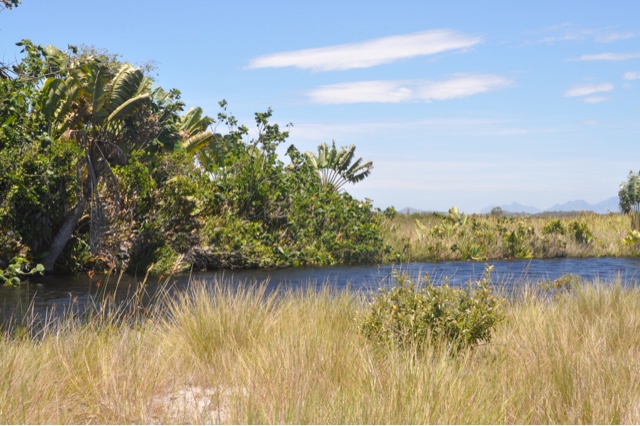
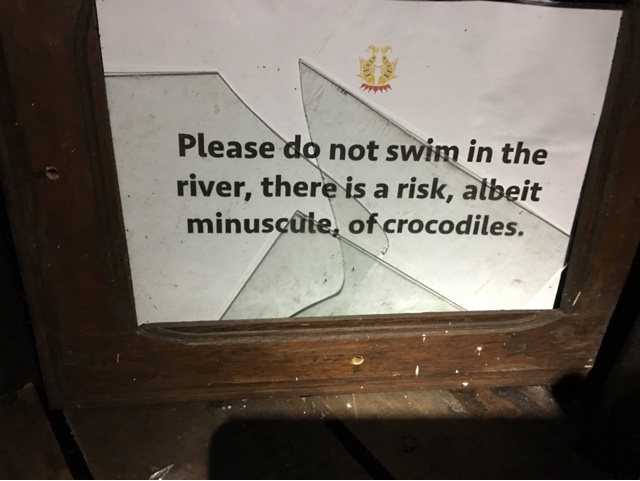
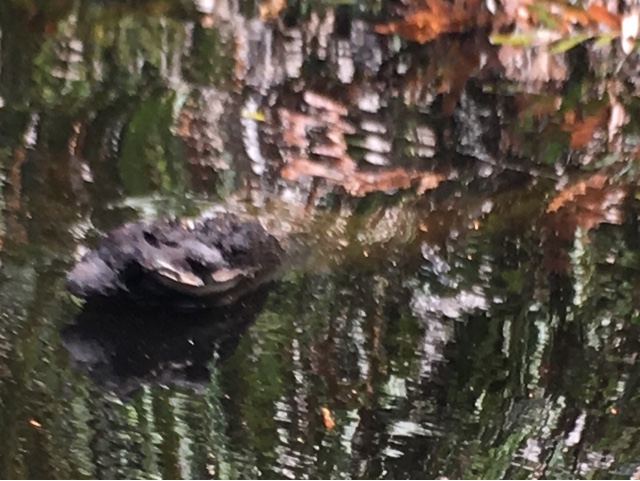
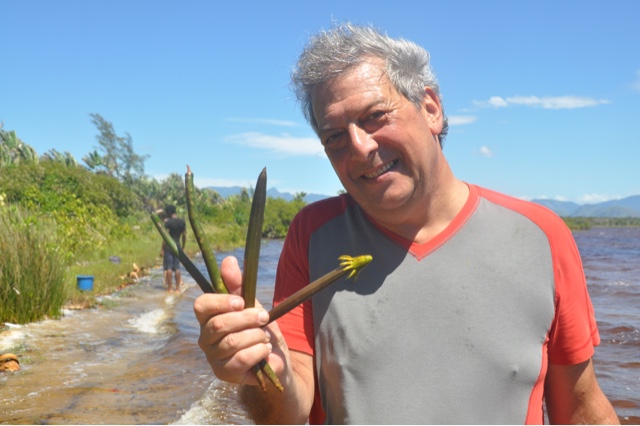
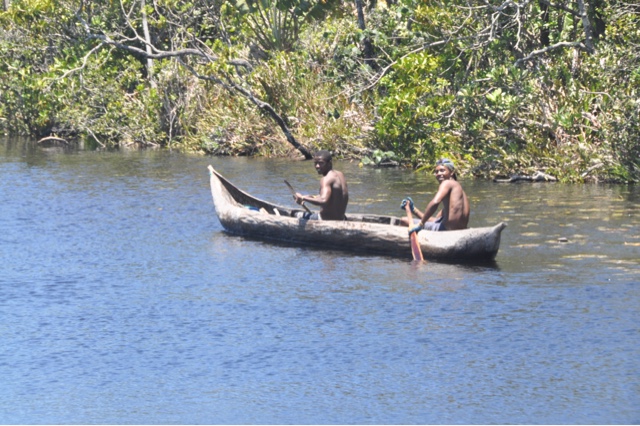
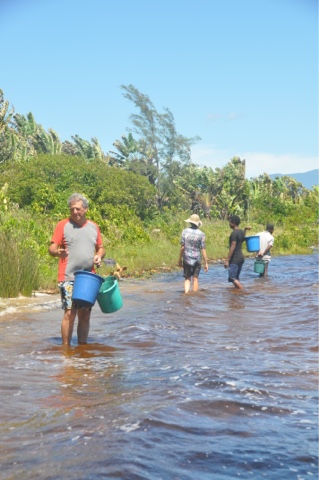
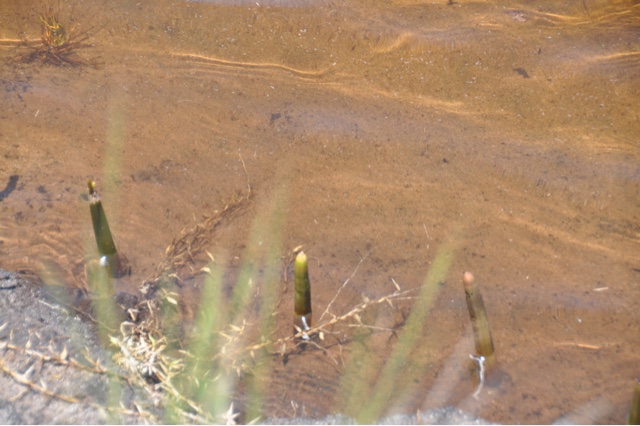
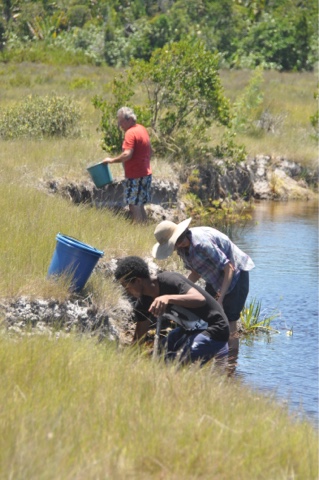
Unknown
Posted at 17:16h, 03 FebruaryLori and Bruce,you make work seem easy with beautiful pictures. Thank you-Ron
Unknown
Posted at 17:19h, 03 FebruaryA short adventure with great pictures -Ron Siegel
Unknown
Posted at 17:27h, 03 FebruaryA short adventure with great pictures -Ron Siegel